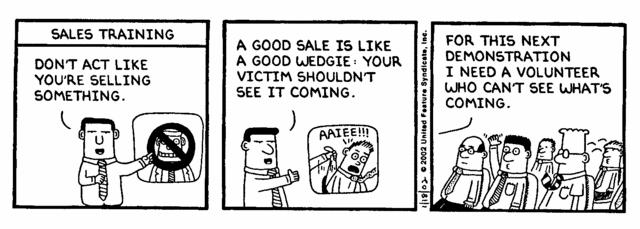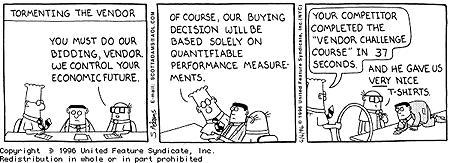I count a total on nine letters on the medical 'incidents' which we discussed over the past weeks in today's ST Forum.
Six of them touched on the issue of doctors refusing to see patients near to the closing time posted, and all of these argued on the subject of patient-doctor relationship and what the expectations of each side should be. Their arguments move from the specifics of the case to the general, and some are well-argued and others less so, but it is nonetheless interesting to see the view from both sides of the divide.
The letters I want to highlight today, however, are the ones relating to the use of 'Elidel'.
The complaint letter (emphasis mine), published 23 Feb, reads as follows:
Doctor prescribed unsuitable rash cream
I AM writing to highlight a very unpleasant experience I had with Thomson Paediatric Centre at Thomson Medical Centre.
On Feb 1, I brought my then four-month-old baby to see the pediatrician for a rash on his cheeks. The consultation with the doctor was over in about five minutes as he had to rush off elsewhere.
The doctor prescribed Elidel (pimecrolimus) cream 1% for the rash and told me to apply it twice daily on the affected area. Although this cream cost me $50, I did not mind as I thought it should be good for my son. But this was not the case.
Imagine my shock when I found out through the Internet that Elidel is not approved for use for children below two-years-old.
The possibility of carcinogenicity of Elidel aside, our Health Sciences Authority (HSA) and the US Food and Drug Administration concur in the recommendation against the use of Elidel for children younger than two-years-old.
In addition, both authorities recommend that Elidel should be used only if other creams have not worked.
It was my baby's first visit to the doctor concerning the rash on his face. Yet he was given a cream that is not meant for babies of his age. The doctor also did not caution me on the use of the cream.
I e-mailed Thomson Medical Centre my complaint on Feb 11. To date, it has not responded.
I am disturbed by the lack of consideration in prescribing Elidel for babies against the HSA's recommendations and the medical centre's slow response in this matter.
Are there any measures to ensure that such strong medication is not prescribed carelessly? I hope the relevant authorities can look into this matter to protect other babies and parents who may be none the wiser about this.
Ruth Tan Yueh Herng (Ms)
The reply is published today (again emphasis mine).
Safe to use rash cream on young infants
I APPRECIATE Ms Ruth Tan Yueh Herng's vexation over her child's skin condition in 'Doctor prescribed unsuitable rash cream' (ST, Feb 23). But her letter contains a few misperceptions.
First, this was not the first time Ms Tan had visited our clinic for her child's eczema. It was their third visit for the same condition.
A steroid cream prescribed in a previous visit was obviously ineffective. In fact, Ms Tan had mentioned that the rash was not responding to treatment elsewhere.
As the eczema was severe, a second line medication like Elidel 1% or Protopic 0.03% is in order. This was a considered prescription and not a careless one as mentioned.
The question is: Is Elidel safe in the dosage and duration prescribed? Elidel is an approved drug in Singapore, USA and other countries.
When the US Food and Drugs Administration approved the drug in 2001, the studies were based on children two years and older. Since then, there have been published studies showing that Elidel is safe for use as a topical skin medication in children three months and older.
As a result, the following countries have approved Elidel for use in children three months and older: Australia, Hong Kong, Indonesia, Malaysia, New Zealand, Pakistan, Philippines, and Thailand.
In Singapore, a multicentre trial involving the National Skin Centre, Changi General Hospital and National University Hospital has been initiated to establish the efficacy and safety of Elidel 1% cream in infants.
Perhaps this is why the Health Sciences Authority has not yet updated its recommendation for the use of Elidel 1% in young infants.
Both steroids and Elidel work by suppressing the immune system. Theoretically, both could cause cancer.
Indeed, oral and injectable steroids and Elidel have been implicated in studies to be carcinogens.
However, the topical forms of these drugs have been found to be very safe in large-scale use.
Topical steroids have been in use for decades while there are over seven million users of Elidel 1%. Studies have shown that such creams have minimal penetration beyond the skin and are not well absorbed into the body.
I understand Ms Tan's frustration when her email went unanswered. But she had chosen to email Thomson Medical Centre instead of our clinic.
We could have clarified the matter and saved her unnecessary worry. We would also have told her that I was called to attend to an emergency Caesarean section immediately after the consultation.
It was unfortunate but my patients who have further queries will wait for my return, which takes up to 15 minutes. If this had upset her, I apologise.
Dr Ang Poon Liat
I believe that despite what we read on the ST Forum (and what you read on this blog) most clinical encounters are mutually-satisfactory ones. By making an issue of a single unsatisfactory episode on a public forum, the complainant gives a one-sided and sometimes inaccurate picture of what a doctor and his practice is like. To defend himself against an unfair accusation, the doctor is put in the unenviable position of having to breach patient-confidentialty, and having to expose the complainant as ignorant or being a liar - again certainly not the sum of who that person is.
I wonder how many times incidents of this kind must happen before the ST Forum stops publishing unverified accounts from complainants without referring them first to the parties complained against. That would seem to me the more professional and responsible thing to do, even if it means fewer 'controversies' for us to blog about.
Labels: letters










